A Year In Burgundy: The Incomparable 2015 Côte de Nuits Wines Realize Their Potential, And Articulately Express The Distinctive Characters Of The Region’s Diverse Terroirs
What do you get when you blend an ideal vintage with top terroirs and then let the wine mature within a perfect setting for nearly a decade?
You get the ideal expression of Pinot Noir in all its textural plenitude, aromatic complexity and sapid savoriness.
The wines in this collection represent the glory that our finest producers were able to coax from the iconic 2015 vintage in the Côte de Nuit, and although many of them drank well upon release, it is only with bottle age that such wines are able to offer their genuinely incomparable insight into the character of the land and the families which have translated this into wine.
The Value Of Burgundy, Regardless Of The Price
Burgundy ‘the concept’ has always hovered in the empyrean—even if the best of the physical stuff drifted out of most rational price ranges. More than stately, austere Bordeaux, more than hedonistic Rhône, more than transcendent Champagne, more than ethereal Loire, Burgundy represents beauty and power recombinant; the Athena of wine.
Its value in the perception outstrips its value on the palate; whereas wine prices are set on reputation of terroirs, the poetry of our mental landscapes remains beyond our ability to quantify. It can only be considered by sense, not cents.
In the retail business, we’re charged with vigilance to ensure that the prices we charge is balanced by the products we sell and few places present more of a challenge than Burgundy, the most coveted wine on the planet. The changing climate may have brought more fine Burgundy appellations to market, but there are fewer of the wines themselves—yields are often a trade-off when vineyards are increasingly dry and hot throughout the season and erratic weather produces more and more crop-devastating storms. Prices have risen so sharply that sticker-shock is an inevitable part of Burgundy shopping and the shelf-dressing domains have priced themselves virtually beyond reach.
Still, although the concept of value may be on a sliding scale in Burgundy, relative bargains abound. And in any case, we can ascend straight up the hierarchy, from village wines to Premier Crus to the highly-rarefied domains of the Grand Cru, nothing will ever quite approach the finesse that Burgundy plays on the imagination.
Making Sense Of Burgundy: What Makes It So Singular
Above all, terroir is an ideology; a flight of vinous fancy that insists a wine’s taste and aroma reflect its place of origin. This reflection may be subtle or overt, but there’s plenty of science behind it. Terroir includes specific soil types, topography, microclimate, landscape characteristics and biodiversity—all features that interact with a winemaker’s choice of viticultural and enological techniques.
Nowhere is this more in evidence than Burgundy, where the notion of place-identity is sacrosanct. The central role that terroir plays in every hierarchal level is not only part of the culture, but it is based on centuries’ worth of confirmation. Although in loose geological terms the entire appellation sits on an ancient limestone seabed, this unity is shattered into an immense mosaic of thousands of individual ‘climats’ from which the vine draws color and flavor. Some are ludicrously tiny—renowned Romanée, for example, is under five acres—and the secret alchemy of terroir may be diversified throughout a village, a vineyard, and even in vine rows within that vineyard.
Burgundian labels reflect that; the quality-focused grades with which we have become so familiar—Bourgogne, Village, Premier Cru and Grand Cru—each have individual sets of rules regarding yield, grapes and production methods that winemakers are legally required to follow. From there, we may or may not find the name of a climat, a term used interchangeably with lieu-dit. Although the Grand Cru wines are generally considered to be classified on the vineyard-plot level and defined as separate AOPs (with the exception of Chablis Grand Cru), some Grand Crus are in fact divided into several lieux-dits. Echézeaux, for example, includes 10, one of which has two alternative names: Les Cruots is also known as Vignes Blanches. Although it is illegal to use the name of lieux-dits on Grand Cru labels, the law is flouted in Clos de Vougeot and one or two other Grand Crus to consumer-friendly ends.
2015 Burgundy: Hedonist’s Vintage
No one could better sum up Burgundy 2015 more splendidly than Jacques Devauges of Clos de Tart: “To make bad wine in 2015, one must wake up and say to yourself, ‘I will make bad wine.’”
This is not to say that it was an easy vintage—just a successful one. In fact—if the pun may be forgiven—the challenges ran hot and cold. Frost affected many Grand Cru vineyards early in the season and proved to be a harbinger of wet and cool temperatures in May. In mid-June, the weather became balmy, then hot, then seriously dry. According to Eric Remy at Domaine Leflaive, “Between June to August, we had 35 days when the temperature was above 30 degrees C and 15 days when the temperature was above 35 degrees C.”
The grapes were under hydric stress for most of that time; August brought off and on downpours, effectively saving the vintage, although the harvest window was narrow because potential alcohol levels were creeping up while acidity was dropping. White wine producers harvested end of August and nearly all the red wine producers harvested in the first week of September.
In all, there were many decisions a grower could have made in 2015 because there was so much material to work with. Some of the reds are elegant and ethereal—purposefully made so with light maceration and gentle handling. Others are dense, chewy and full-bodied, reminiscent of wine from warmer climates. Cécile Tremblay of the eponymous Vosne-Romanée domain says, “2015 had the best ripeness at harvest since I started winemaking. There was big quantity of polyphenols and too much of everything – I kept thinking of what to do with it. The big question was: Who am I making this wine for and what is the wine’s drinking window?”
In all, 2015—especially for red wines—has been heralded as having ‘nearly the concentration of 2005 allied with the sensuality of 2010.’
Ten Years After
That the finest Burgundies improve over time is no revelation. What is particularly interesting is that, unlike many age-worthy wines, Burgundy follows a somewhat unique path. There is no ‘peak’, for example—you make that discovery over the years as you sample a specific vintage from given label. There is a sort of ‘sine’ wave with multiple peaks and valleys. If a wine is unfriendly today, don’t assume it has passed its pinnacle—just push it further back in the cellar, and you’ll likely be rewarded.
For every rule in Burgundy, there are countless exceptions, but an experienced cellar master will tell you that after a few years in the bottle (generally between five and eight), when the fruit begins to fade a bit, there is a period when the wine may taste thin and a bit shrill. You might revive the old optimistic tombstone inscription: ‘Not dead, but sleeping.’
If the original wine was from a good vintage and was produced with circumspection, it will reanimate with tertiary notes—the fruit dries out to evoke raisin, fig or prune and more savory and musky aromas emerge as well, evocative of licorice, leather, mushroom, tobacco and dried bracken on a forest floor.
The wines in this collection have just entered this phase where the springtime purple notes have grown into the russet tones of autumn; along with us all, the refreshing, youthful smells of blackberry and cherry cola have matured into the introspective richness of adulthood.
Côte de Nuits
The Champs-Elysées Of Burgundy
Named after its principal town, Nuits-St-Georges, the Côte de Nuits produces the greatest red wines of Burgundy. As in its counterpart, the Côte de Beaune, not all the wines are created equal; the best are from a narrow, mid-slope band of limestone and from vineyards facing south-east to maximize exposure to the sun. This precise mix of soil and sunshine allows Pinot Noir to showcase an extraordinary range of textures and flavors.
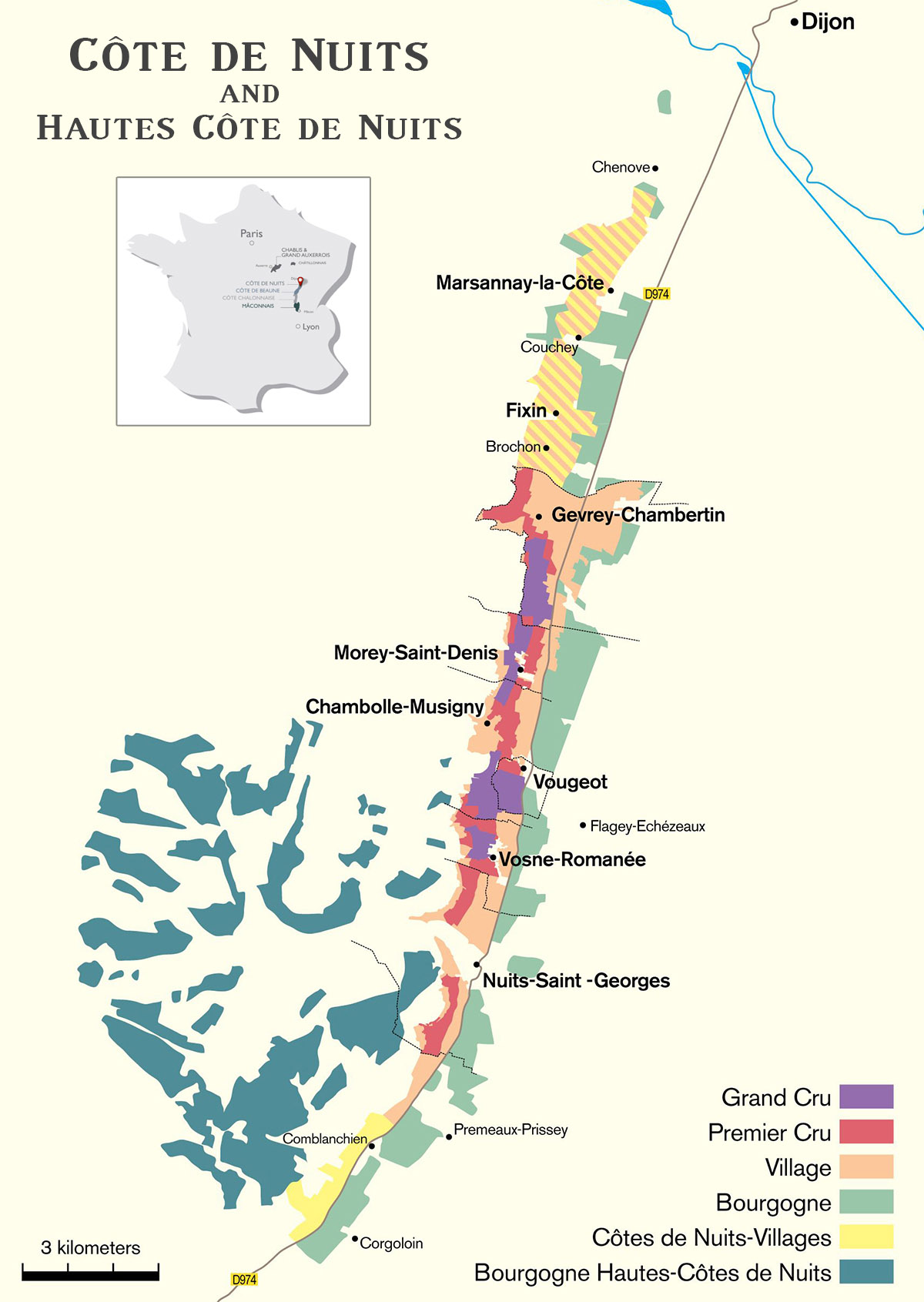
Côte de Nuits is subdivided into eight designated villages; Chambolle-Musigny, Fixin, Gevrey-Chambertin, Marsannay (which also has a separate designation for rosé), Morey-Saint-Denis, Nuits-Saint-Georges, Vosne-Romanée and Vougeot. The area includes 24 superlative vineyard sites clustered around six communes and designated Grand Cru and over a hundred Premier Cru sites. In addition, there are two district appellations: Côtes de Nuits-Villages, which are wonderfully elegant and affordable reds that are ready to drink upon release, and Bourgogne Hautes-Côtes de Nuits, which consists of some 20 villages in the hills west of the vineyards of the Côte de Nuits that produce wines with this appellation.
Marsannay
Within Burgundy’s hierarchy, Marsannay is a fairly new invention. The northernmost commune in Burgundy’s heart only achieved Village status in 1987; prior to that, its grapes were restricted to use in regional wine. Suffice to say that the growing pains of such a phenomenon may take decades, and to date, Marsannay contains none of the storied Grand or Premier Crus in the carefully delineated Burgundy classification system.
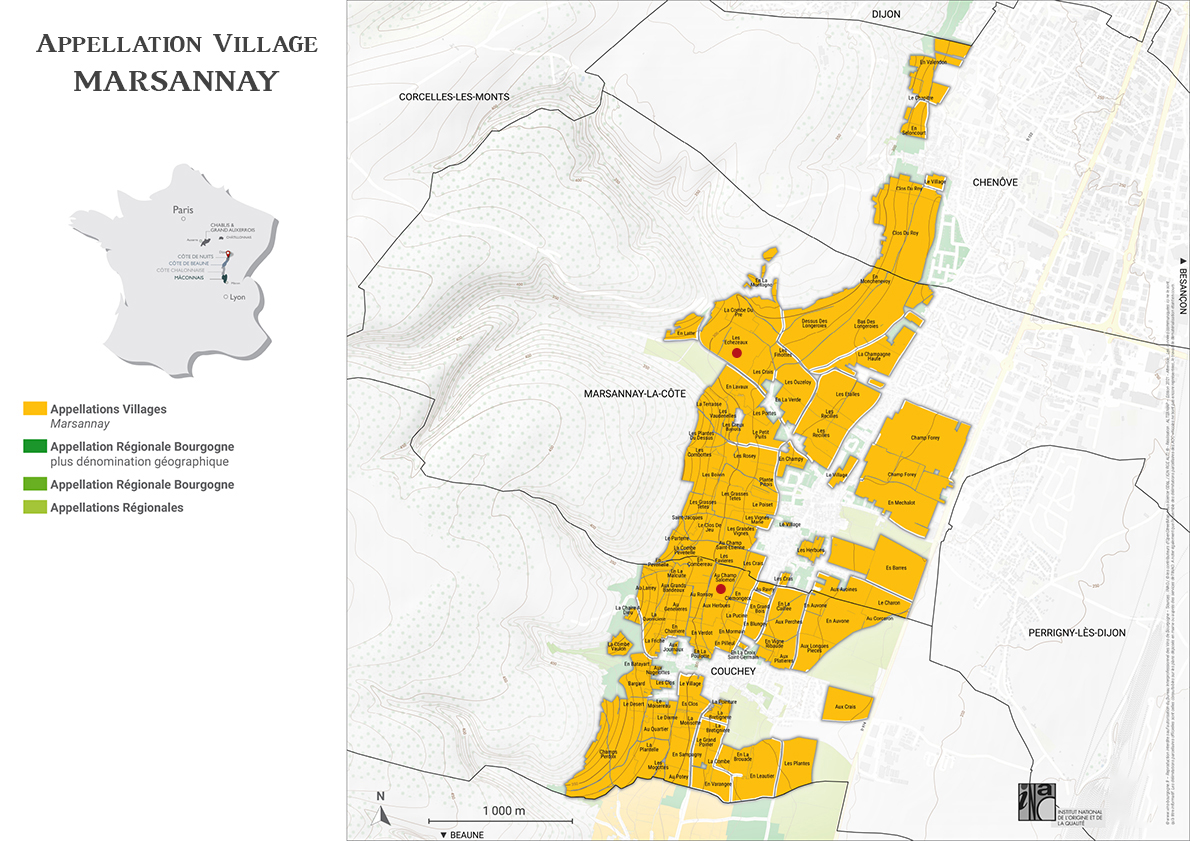
And this is good news for bargain hunters. In Burgundy most emphatically, wine prices are set on reputation as much as anything else. As such, Marsannay wines represent unparalleled value, especially since many individual estates have forged new commitments to improve what history and nature has provided.
Méo-Camuzet Frère & Soeurs
Méo-Camuzet Frères & Sœurs is the Méo-Camuzet négociant entity of Domaine Méo-Camuzet and works closely with local growers to source the best fruit available; the Méos oversee vineyard management, and they care for the wines in the cellars with the same attention to detail and respect of terroir that they do those of the domain.
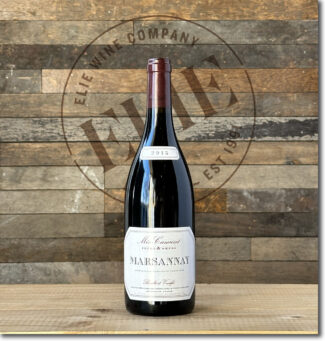 Méo-Camuzet Frère & Sœurs, Marsannay ($150)
Méo-Camuzet Frère & Sœurs, Marsannay ($150)
The 2015 Marsannay is full-bodied, lively and muscular with fine tannins, good length and plenty of staying power under the hood.
Domaine Bart
Sixteen years ago, the winegrowers of Marsannay started the process of having part of the appellation upgraded to Premier Cru. At Domaine Bart, which produces as many as nine different Marsannay bottlings in a given vintage, it is believed that 25% and 30% of the appellation is up for this bump upstairs. Pierre Bart, the sixth generation to run Domaine Bart, says, “We are trying to show which climats would be of interest and which ones should remain in the village appellation. My guess is that there will be five or six Premier Crus. probably the largest ones like Champs Perdrix, Champ Salomon, Clos du Roi, Longeroies and Montagne.”
The Bart domain covers 54 acres, mostly in Marsannay, but with a few parcels in Fixin, Gevrey-Chambertin, Chambolle-Musigny and Santenay.
“My grandmother comes from the same family as Domaine Bruno Clair,” explains Pierre Bart. “Part of the vines come from that side of the family, part from my grandfather’s side. The Bonnes-Mares and the Chambertin-Clos de Bèze mainly come from my grandmother. 35 years ago, when my uncle arrived at the domain, the style of the wines changed. He increased the size of the holding, mainly in Marsannay. He chose to improve quality, both in terms of equipment and in winemaking. Since then we haven’t changed our vision a single iota.”
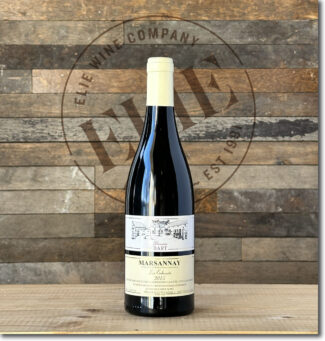 Domaine Bart, Marsannay ‘Les Echezots’ ($68)
Domaine Bart, Marsannay ‘Les Echezots’ ($68)
‘Echezots’ parcel in Marsannay is one of the coolest in the entire commune—it is in the northern reaches of the appellation, which is already in the north of Burgundy. Echezots soil is pebbly with lots of stones and gray silts from the nearby Combe du Pré. As such, the wine displays an austere character where the fruit is lively and integral, but somewhat background compared to the mineral textures and iodine hints.
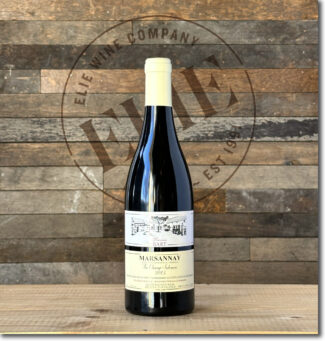 Domaine Bart, Marsannay ‘Au Champ Salomon’ ($78)
Domaine Bart, Marsannay ‘Au Champ Salomon’ ($78)
Au Champ Salomon is a mid-slope vineyard with south/southeast exposure; soils are clay-limestone formed from cone pebbles. The grapes were drawn from 40-year-old vines, hand harvested, fermented with native yeasts and aged for 18 months in 30% new oak.
Fixin
Fixin is the crème in an Oreo cookie formed by Marsannay to the north and Gevrey-Chambertin to the south; it boasts a superb terroir and unlike Marsannay, it contains six Premier Cru vineyards—La Perrière, Clos du Chapître, Arvelets, Clos Napoléon, Le Meix-Bas and Hervelets. Soils are similar, with homogenous brown limestone exploited best in exposures running east to south-east. Some vineyard plots (Hervelets, for example) have more marl, and those wines are predictably heavier and longer-lived.
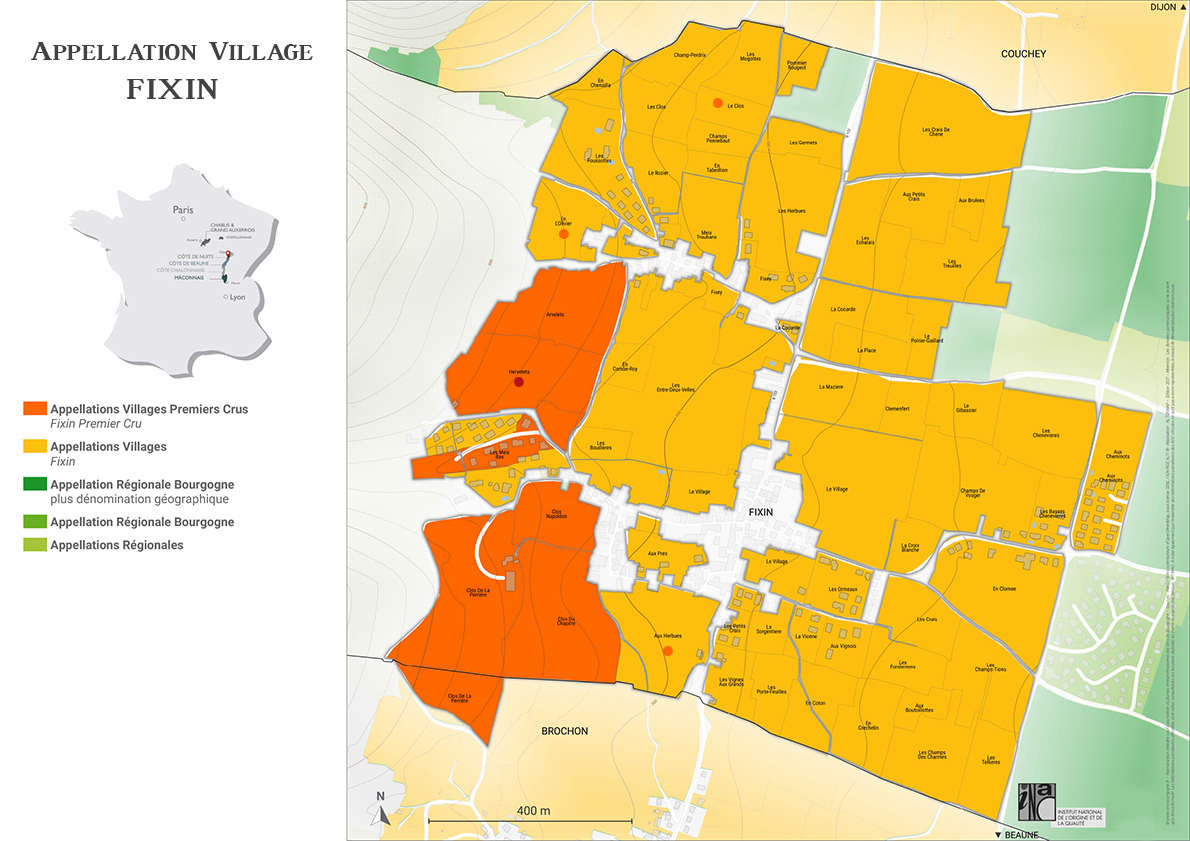
Fixin is solidly red wine country; Pinot Noir accounts for 96% of total production. Chardonnay and Pinot Blanc are also grown in small quantities, whereas Pinot Gris was decommissioned in 2011. Although the legislation permits up to 15% of Chardonnay and Pinot Blanc to be used as accessory grapes in red wines, this is rarely done. The few white wines are generally made entirely of Chardonnay, although blending with Pinot Blanc is permitted. Not much Fixin Blanc makes it out of the appellation; it remains a locally-kept, locally-consumed secret.
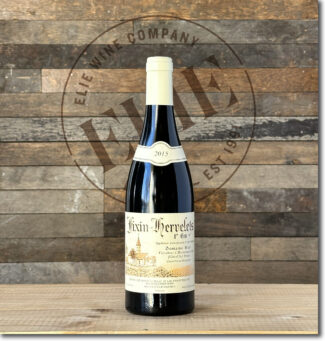 Domaine Bart, Fixin Premier Cru Hervelets ($110)
Domaine Bart, Fixin Premier Cru Hervelets ($110)
‘Hervelets’ wines (currently a bit under-the-radar) are typified by their robust, tannic, and sometimes ‘sauvage’ character. So celebrated have they been over the centuries that they were once mentioned in the same breath as Chambertin and Corton. The wine undergoes 20% whole-bunch vinification and 25% new wood.
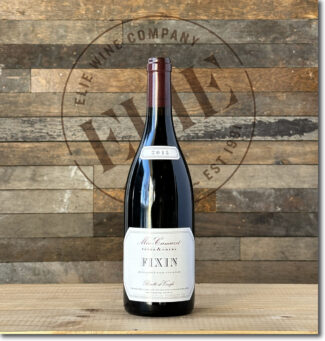 Méo-Camuzet Frère & Sœurs, Fixin ($160)
Méo-Camuzet Frère & Sœurs, Fixin ($160)
Grapes sourced from Le Clos, Les Herbues and En Olivier lieux-dits. Wines from these parcels show more fruit than from nearby Marsannay and less spice on the finish.
Gevrey-Chambertin
As those schooled in Burgundian lore know, during the nineteenth century it became fashionable for villages in the Côte d’Or to adopt double-barreled names, adding a hyphen followed by the name of their most famous vineyard: Thus Chambolle added Musigny and Gevrey added Chambertin.
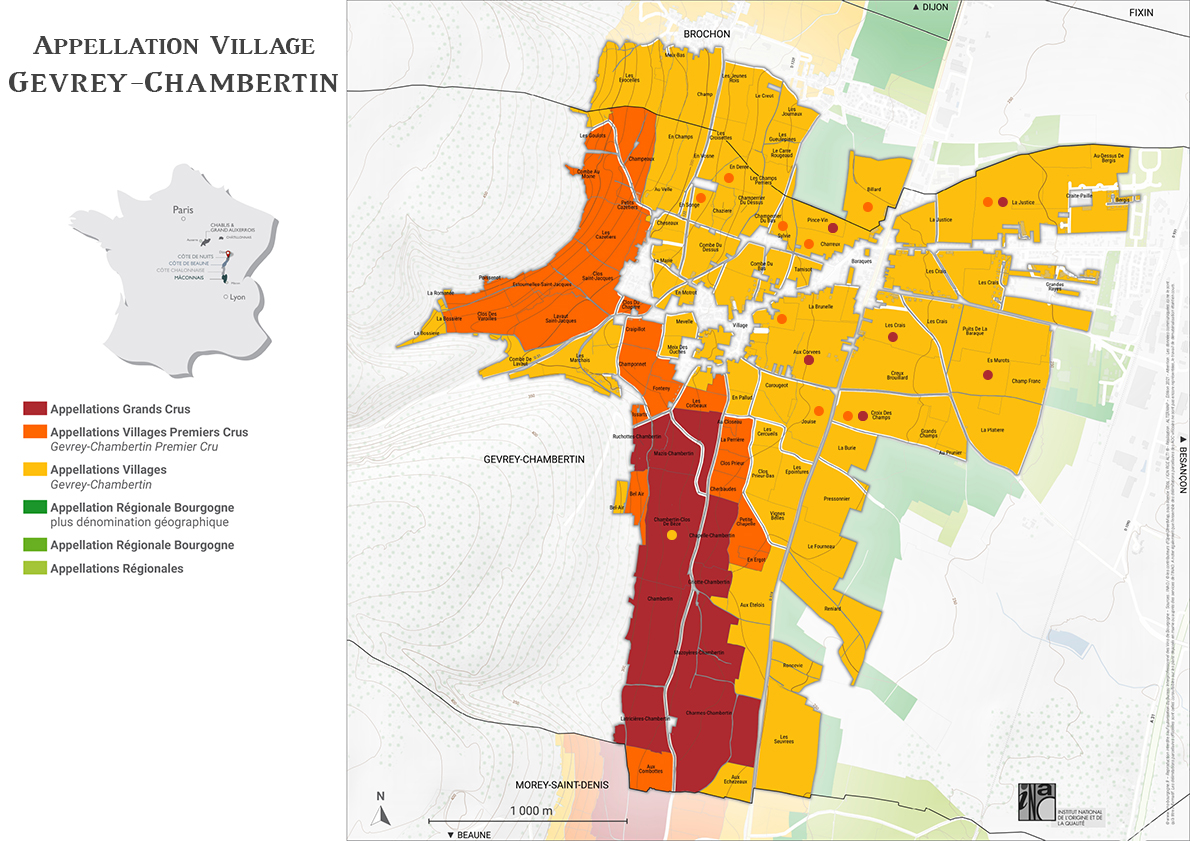
In minimalism, less may be more, and in wine—especially those with a hyphenated name—more may be less; a village-level Gevrey-Chambertin, for example, does not seek to compete with the quality of ‘Le Chambertin’ itself. But if nothing else, its name reminds you that it comes from a rarefied zip code. And to be sure, the region is hallowed grapeland, graced with the Holy Trinity of terroir—elevation, climate and soil structure. Contained within the appellation are nine Grand Crus and 26 Premier Crus (whose name on the label may be followed by the name of the climat of origin) as well as nearly a thousand acres of Village wine.
Domaine Gallois
Prior to taking over the family estate in 1989, Dominique Gallois studied catering in Paris and ran his own restaurant for six years. When he returned to Burgundy, the domain consisted of six acres in Gevrey-Chambertin which his father had managed for forty years, selling the grapes to négociants. Dominique began to renovate the property and in 1989 (after purchasing additional acreage in Combe aux Moines, Petits Cazetiers and Goulots) to bottle his own product, looking first to private customers to build a reputation. Recognizing that he works in terroir that is the envy of the world, Dominique takes special care to work the domain by hand, without pesticides or herbicides. Says Gallois, “Our year is quite full; winter months are dedicated to vine maintenance and Guyot-style pruning. During spring and summer, several tasks are performed allowing yields to be controlled and managing the healthiness of the future grapes. Harvesting is manual—we count on a small, faithful team to carry out the first sorting on the vine. Thereafter, grapes pass over a sorting table where bunches are inspected so as to conserve only the best fruit.”
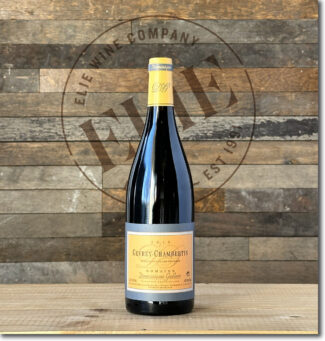 Domaine Gallois, Gevrey-Chambertin ($130)
Domaine Gallois, Gevrey-Chambertin ($130)
Made up of a blend of 10 parcels situated around the village of Gevrey-Chambertin leading to a fully-rounded cuvée—contributing climats are En Songe, En Jouise, En Billard, En Dérée, Croix des Champs, Sylvie, La Justice, Charreux and two parcels of the clos surrounding Gallois’ home, where the average vine age is around fifty years. This is a textbook Gevrey-Chambertin with massive, yet velvet-smooth tannins and notes of wild game.
Domaine Régis Bouvier
Only a few producers in the Côte d’Or’s northernmost zone of Marsannay have gained international attention for the quality, specificity, and ambitiousness of their wines. Régis Bouvier is regularly mentioned among them. He has a lengthy track record of both consistency and value in this appellation that is quickly growing in prestige.
Régis owns nearly 25 acres of vineyards, mostly in Marsannay, with a few prime parcels in Morey-Saint-Denis and Gevrey-Chambertin. He vinifies all three colors – red, white, and rosé, but the red wines are his crowning achievement, managing to be simultaneously bold and refined, with aromatics to spare. This is all the result of managed yields and high quality terroirs.
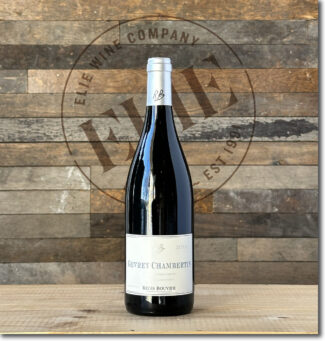 Domaine Régis Bouvier, Gevrey-Chambertin ($93)
Domaine Régis Bouvier, Gevrey-Chambertin ($93)
Régis’ Village-level Gevrey is drawn from several plots (Les Crais, Aux Corvées, Les Murots, La Croix des Champs, Prince-Vin and La Justice) totaling only a little over an acre. Soils are limestone with marly clay and the vines are about 40 years old. Aged in oak—30% new—for 18 months.
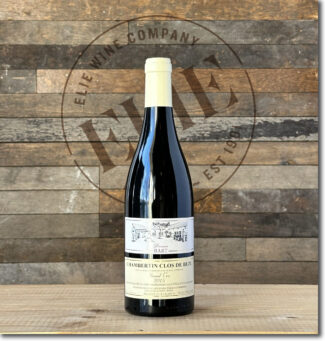 Domaine Bart, Chambertin Clos de Bèze Grand Cru ($590)
Domaine Bart, Chambertin Clos de Bèze Grand Cru ($590)
Clos-de-Bèze is one of several Grand Cru sites in one contiguous plot, of which the Chambertin vineyard is at the heart, covering the best part of the hill. The soils of de Bèze are he nearly identical to Chambertin, made up of pebbly, free-draining limestone with a good proportion of clay. This is nutrient-poor terroir that ensures the vines do not expend too much effort on leafy vigor, instead producing small, intensely flavored berries that make high-quality wines. The sunny southeastern aspect ensures that grapes reach full ripeness while retaining essential acidity in Burgundy’s cool continental climate, and as a result, Clos-de-Bèze wines are known to be incredibly well balanced. The wine sees 40% whole-bunch vinification and 50% new wood; Pierre Bart thinks Clos de Bèze tends to taste almost too ready to drink at bottling, so at the end of fermentation he brings the temperature back up and gives the wine a couple of powerful punch downs to fix a bit more tannin.
Morey-Saint-Denis
Forming a stylistic bridge between the firm, fleshy wines of Gevrey-Chambertin and the perfumed wines of Chambolle-Musigny, Morey-Saint-Denis is a wealth of Crus, including twenty Premier Crus and five Grand Crus: Clos de Tart, Bonnes-Mares, Clos de la Roche, Clos Saint-Denis and Clos des Lambrays. The best sites are planted on thin, well-drained, oolitic limestone soils that date from the Middle Jurassic, and occupy the middle slopes while lesser quality wines are produced on the highest and lowest elevations.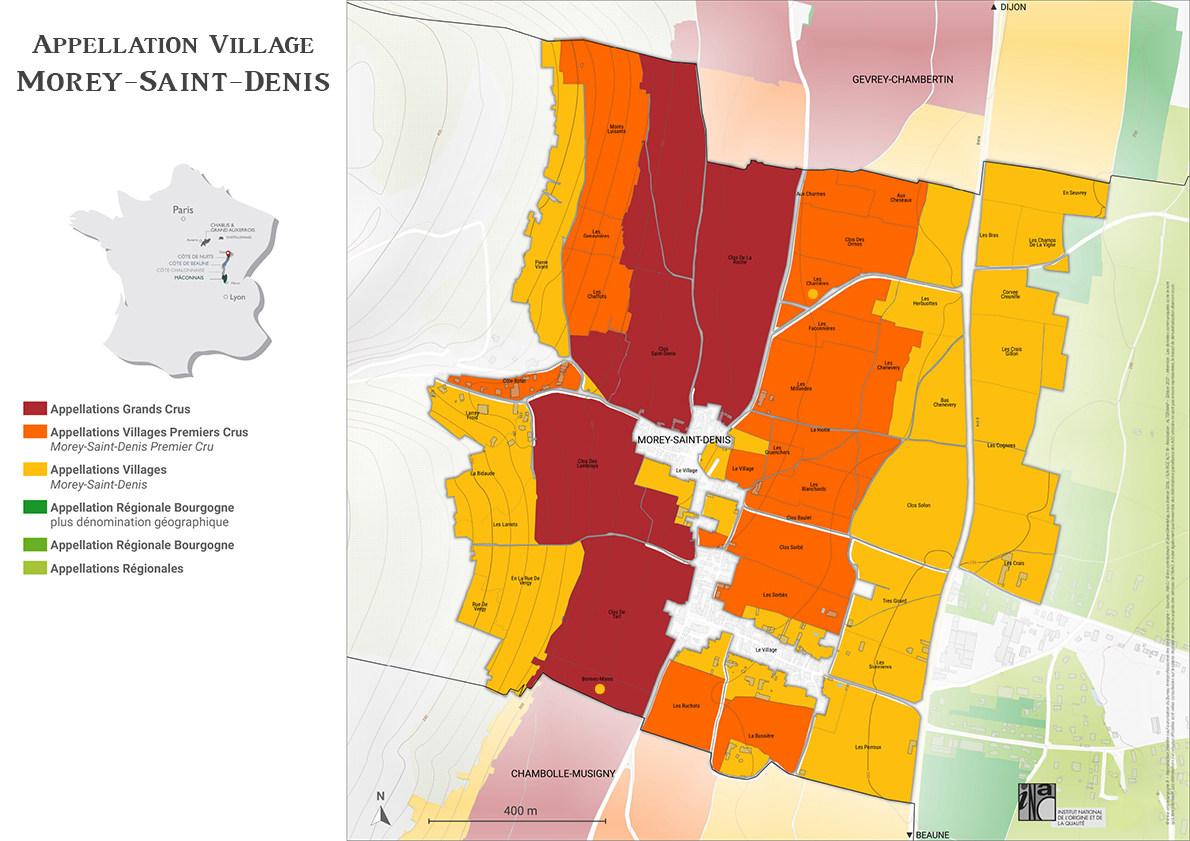
Even among Burgundy enthusiast, the Premier Cru climats are sometimes unfamiliar, due in part to the practice of blending several vineyards as a generic Morey-Saint-Denis Premier Cru bottling, something that is somewhat more common here than in other communes.
Domaine Alain Michelot
Slow evolution is a hallmark of the Alain Michelot philosophy. With twenty acres of vines, nearly all in Nuits-Saint-Georges and half of them Premier Crus, they have slipped under the radar of wine media attention, especially in the United States—despite Matt Kramer’s unbridled praise in ‘Making Sense of Burgundy.’
Change happens gradually at Domain Alain Michelot, and only in increments, methodically and rationally. But the significant shift at the top happened when Alain retired as winemaker and was succeeded by his daughter, the poetically named Élodie Michelot. Her touch has been delicate and judicious; slightly smaller yields, slightly less oak employed. As always, the grapes are 90% destalked, and cuvaison lasts around three weeks. After pressing, the must settles for a good month—a process known as ‘debourbage’—and only then is transferred to Allier and Limousin barrels. The age of the wood depends on the vintage, but is roughly a third new oak. There is no racking for the next 20 months, resulting in very fine tannins, and as is the tradition in Nuits-Saint-Georges, the wines are bottled lightly filtered, but not fined.
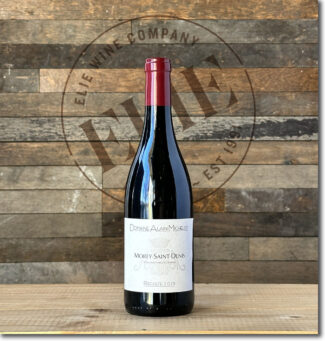 Domaine Alain Michelot, Morey-Saint-Denis ($77)
Domaine Alain Michelot, Morey-Saint-Denis ($77)
Having spent 18 months in oak barrels (25% new), the wine reflects the best of the site—opulent cherry framed by bramble, violet and licorice with ‘wildwood’ emerging, especially moss and truffle.
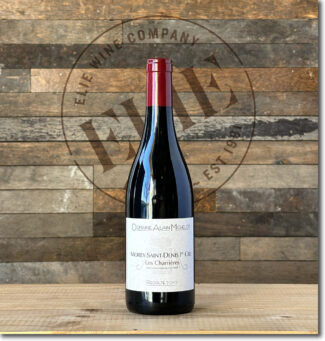 Domaine Alain Michelot, Morey Saint Denis Premier Cru Les Charrières ($130)
Domaine Alain Michelot, Morey Saint Denis Premier Cru Les Charrières ($130)
One of 20 Premier Cru climats in Morey-Saint-Denis, the six-acre Les Charrières vineyard lies on shallow, free draining marl just below the famed Clos de la Roche Grand Cru. It faces east, angling gently toward the rising sun, allowing vines to develop sugars and phenols in cool seasons but retaining enough acidity that these wines are typically described as ‘lean.’
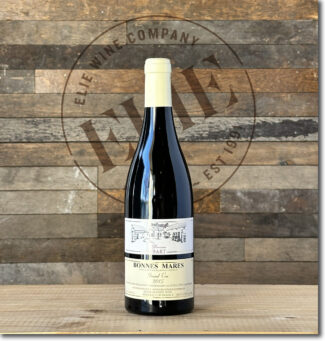 Domaine Bart, Bonnes Mares Grand Cru ($550)
Domaine Bart, Bonnes Mares Grand Cru ($550)
One of five Grand Cru vineyards in Morey-Saint-Denis, the 38-acre site straddles the demarcation line where Chambolle begins; for this ‘split-personality’ reason, it is one of the most often overlooked Grand Cru climats in Burgundy. 30% whole bunch and one-third new wood; the grapes come from a 3-acre holding comprised of two large parcels sitting just above those of Domaine Comte de Vogüé.
Chambolle-Musigny
Along with Vosne-Romanée, the communes of Chambolle-Musigny and Gevrey-Chambertin round out the ‘Big Three’ of Burgundy reds. Much has been written to compare the last two, perhaps best summarized by Nadine Gublin of Domaine Jacques Prieur: “Chambertin has a colder climate and tends to have more structure than Musigny; Musigny is more forward and elegant; it has a body that is very silky and satiny, while Chambertin has greater finesse, but needs more time to reveal itself—it is more serious and discreet.”
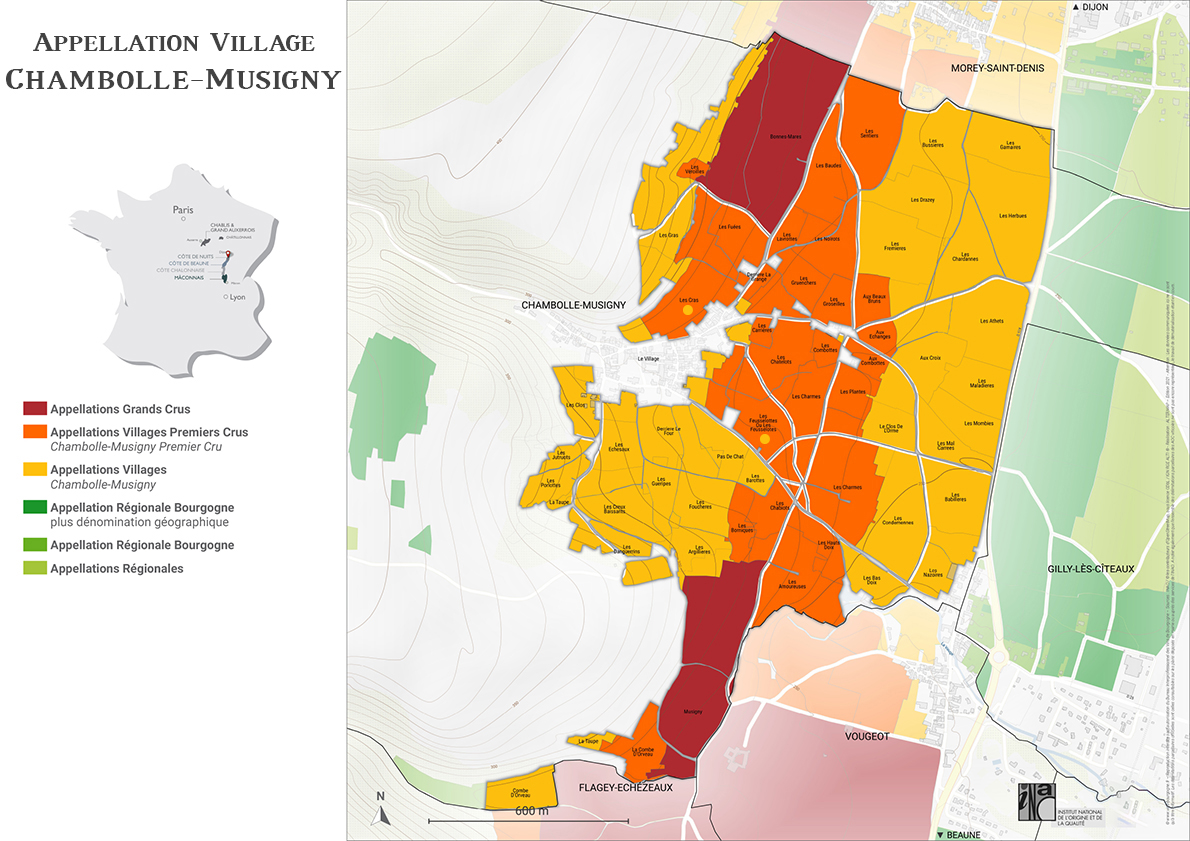
There is a marked difference in size, too: Chambolle-Musigny is relatively small, covering five hundred acres, of which 180 are Premier Cru—the appellation has 24. There are also two Grand Cru climats, Bonnes-Mares, which links its vineyards to those of Morey-Saint-Denis, and Musigny, overlooking the Clos de Vougeot. The prestigious Premier Cru site Les Amoureuses, however, is doubtless on their level.
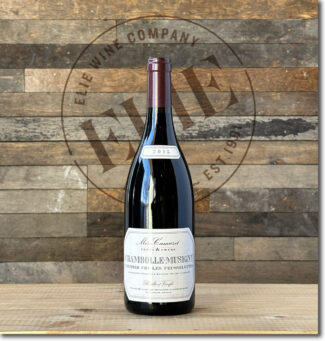 Méo-Camuzet Frère & Sœurs, Chambolle-Musigny Premier Cru Les Feusselottes ($390)
Méo-Camuzet Frère & Sœurs, Chambolle-Musigny Premier Cru Les Feusselottes ($390)
Les Feusselottes is a large climat located in a geological hollow between Chambolle-Musigny and Les Charmes; in general, the vineyard faces southeast, but a slight undulation makes for a variety of microclimates. Sitting on a wide alluvial fan spreading out from the Combe Ambin, Les Feusselottes has the deepest and richest soil of Chambolle-Musigny’s Premier Crus. Distinguished by this red, silty earth, the high proportion of limestone results in the wines’ pronounced mineral character.
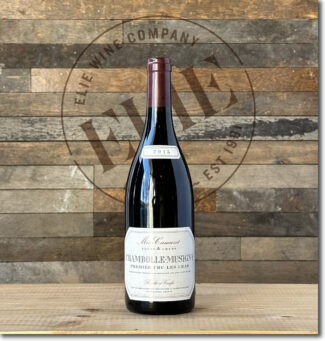 Méo-Camuzet Frère & Sœurs, Chambolle-Musigny Premier Cru Les Cras ($390)
Méo-Camuzet Frère & Sœurs, Chambolle-Musigny Premier Cru Les Cras ($390)
The hillside on which Les Cras lies curves slightly around towards the west into the Combe Ambin, providing a unique terroir that makes Les Cras markedly different than many of the other top Chambolle-Musigny vineyards, offering more sunlight exposure than those on slopes that face due east. The limestone-marl soils are similar to Bonnes-Mares, but with higher clay content, giving the wines a little more muscle—the clay contributes minerals and hard-to-extract moisture to the vines, but the topsoil (even on the traditionally heavier lower slopes) is markedly shallow.
Vougeot
The Vougeot commune should be distinguished from its most famous vineyard, Clos de Vougeot, since it also encompasses several other fine climats (several of which are Premier Cru) and has a reputation for excellent white wines as well as reds—rather unusual for the Côte de Nuits. Even red wines from the tiny appellation are allowed to add up to 15% ‘accessory’ varieties, Chardonnay, Pinot Blanc or Pinot Gris.
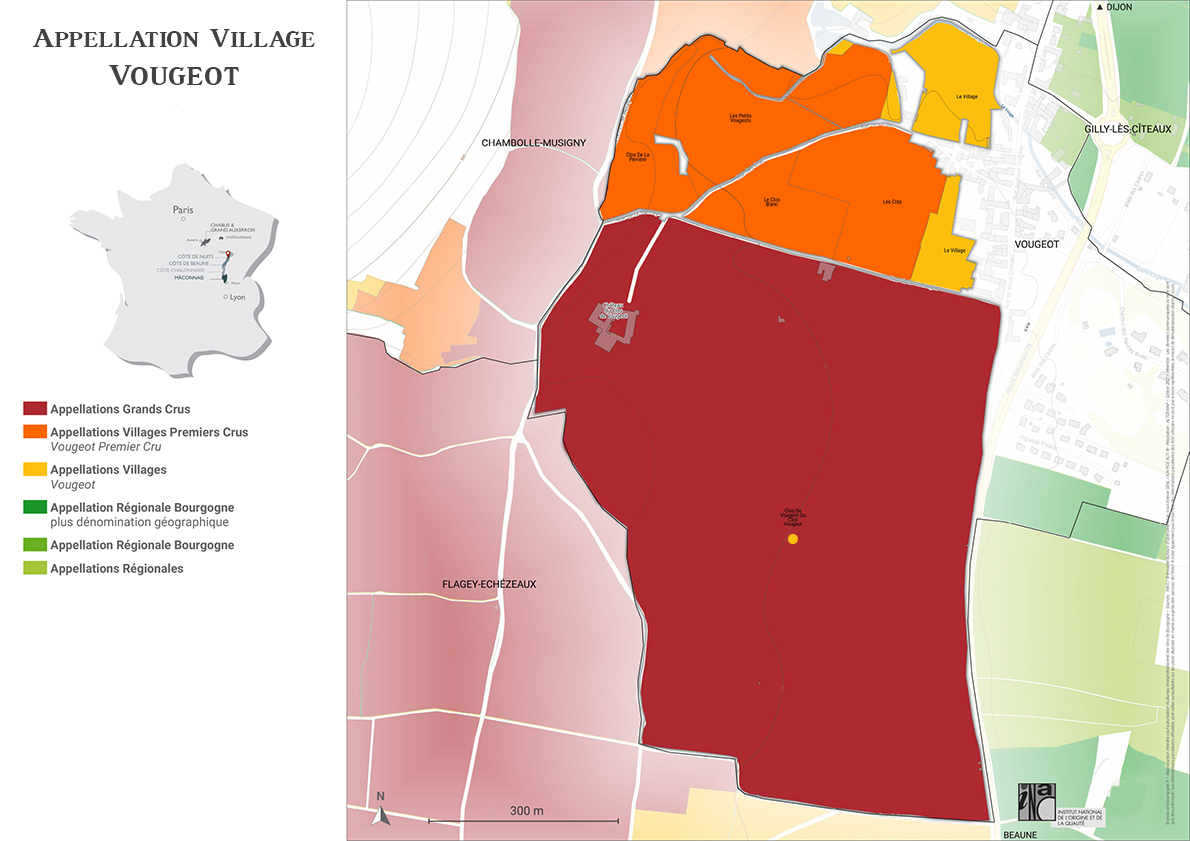
Deriving its name from the small Vouge river, Vougeot (both the Clos and the satellite climats) owes its reputation to the powerful abbey of Cîteaux, who established these vineyards in the 12th century. The best wines of Vougeot are among the most masterful in Burgundy, succulent and mellow allowing a seamless balance between elegance and delicacy and meaty fullness.
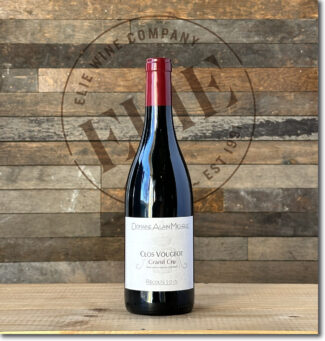 Domaine Alain Michelot, Clos Vougeot Grand Cru ($370)
Domaine Alain Michelot, Clos Vougeot Grand Cru ($370)
Entirely walled, Clos Vougeot is iconic—one of the best known Grand Crus in Burgundy. It covers 125 acres of land, second in size only to Corton, and is equally famous for its fragmentation: It is divided into 100 different parcels owned by nearly as many producers. This creates quality issues; prior to this territorial crumble, grapes from the various microclimates in the vineyard could be blended to create a single harmonious wine. Now, a producer relies on his/her little slice of glory, and may not always produce Grand Cru-quality wares. It is safe to say, however, that the Michelot family makes a consistently wonderful Clos Vougeot, ripe with balanced fruit and soil tones.
Domaine Thibault Liger-Belair
Cousin to Vicomte Liger-Belair of La Romanée fame, in 2001 Thibault Liger-Belair took over storied family property in Nuits-Saint-Georges, reclaiming vineyards which had been contracted out to various share croppers and creating a new domaine under his own name. The properties include some of the most hallowed vineyards in Burgundy: The Grands Crus of Richebourg and Clos de Vougeot, as well as the Premier Cru of Les Saint-Georges that is one of the few vineyards in modern-era Burgundy to be considered for promotion to Grand Cru.
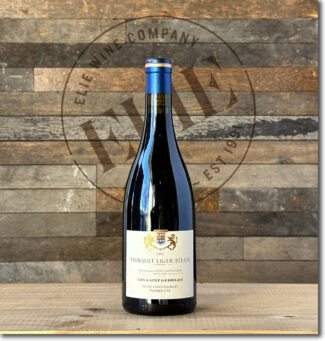 Domaine Thibault Liger-Belair, Clos Vougeot Grand Cru ($490)
Domaine Thibault Liger-Belair, Clos Vougeot Grand Cru ($490)
The grapes are drawn from an acre-and-a-half located in the southern part of the appellation, at the corner of the wall separating the Echézeaux and Clos-Vougeot; it was planted in 1948 in long rows (almost 700 feet long) on three different soils: one, with a high limestone/clay ratio, then a terroir filled with small stones, and lastly, fine silt. Harvesting is manual with 40% whole clusters; 50% of the wine is aged in new barrels between 18 to 24 months.
Domaine Méo-Camuzet
Located in the heart of Vosne-Romanée, Méo-Camuzet’s 35 acres extend through some of Burgundy’s top Crus. So much sub-dividing within families underlines the drama that is Burgundy’s legacy that it rare enough for a grower to have enough vines to be able to bottle one Grand Cru. Méo-Camuzet has six.
This is in part the work of the late Henri Jayer, one of Burgundy’s legendary winemakers. Henri spent over forty years farming parcels from Méo-Camuzet under his own label, and for three years, he mentored Jean-Nicolas Méo as he prepared to retire.
Opting to spend his time in the cellar, Jean-Nicholas has put the vineyards in the hands of Christian Faurois, the son of one of domain’s original métayeurs—a sort of sharecropper who tends the land for a portion of the produce. Beside the six Grand Crus astounding grands crus (Richebourg, Clos de Vougeot, Echézeaux, Corton Clos Rognet, Corton Les Perrières, and Corton La Vigne au Saint), Méo produces ten Premier Crus from the communes of Vosne-Romanée, Nuits-St-Georges, Chambolle-Musigny, and Fixin.
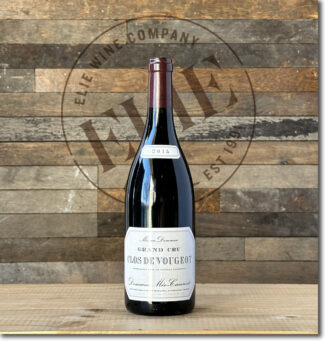 Domaine Méo-Camuzet, Clos de Vougeot Grand Cru ($590)
Domaine Méo-Camuzet, Clos de Vougeot Grand Cru ($590)
Jean-Nicolas Méo asks and answers: “Is this a wine which expresses the Cistercian rigor which gave birth to it? No, its image is rather that of a refined gentleman.”
The 7-acre plot that the domain owns is near the top of the vineyard where there is less than 16 inches of topsoil and roots must work their way down through the cracks in the rocks to find water. About a third of the vines were planted in 1920, another third in 1960. Extraction is the name of the game in vinification and leads to remarkable length on a picture-perfect Clos Vougeot.
Domaine François Lamarche
Sixth-generation winemaker Nicole Lamarche has taken her 28 remarkable acres, from which she produces fourteen wines, and re-established the property as one of the top estates in Vosne-Romanée. This return-to-the-past of vineyards dating back to 1797, is the result of integrated viticulture, in which she manages each plot individually and restricts the use of new oak to produce wines that are paradigms of elegance and fragrance—the obligation of all fine Burgundies.
“We are graced with outstanding terroir,” Lamarche maintains. “Our vines are planted in soils of oolite and limestone that contain plenty of iron, giving it the ability to produce full-bodied, well-structured wines with deep color and an excellent capacity for aging.
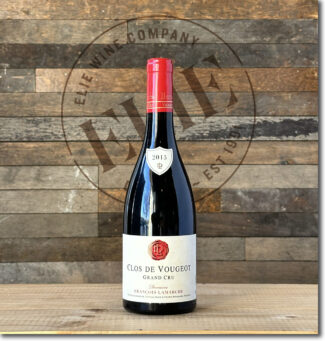 Domaine François Lamarche, Clos de Vougeot Grand Cru ($390)
Domaine François Lamarche, Clos de Vougeot Grand Cru ($390)
The monks who tended Clos de Vougeot for nearly a thousand years clearly counted their blessings; it is also one of the few Grand Crus large enough to have multiple lieux-dits within it. Lamarche has three parcels—one near the château by Mugneret-Gibourg; one in the middle near Petit Maupertuis and one along the road by Faiveley. The gentle extraction and long ageing have given us wine for the ages.
Flagey-Echezeaux
Flagey-Echézeaux is commune, not an appellation, and as such, it tends to get a cursory nod in the region, even though it is home to the famous Grand Cru vineyards Echézeaux and Grands Echézeaux; its non-Grand Cru wines are sold as Vosne-Romanée or the generic regional Bourgogne appellation.
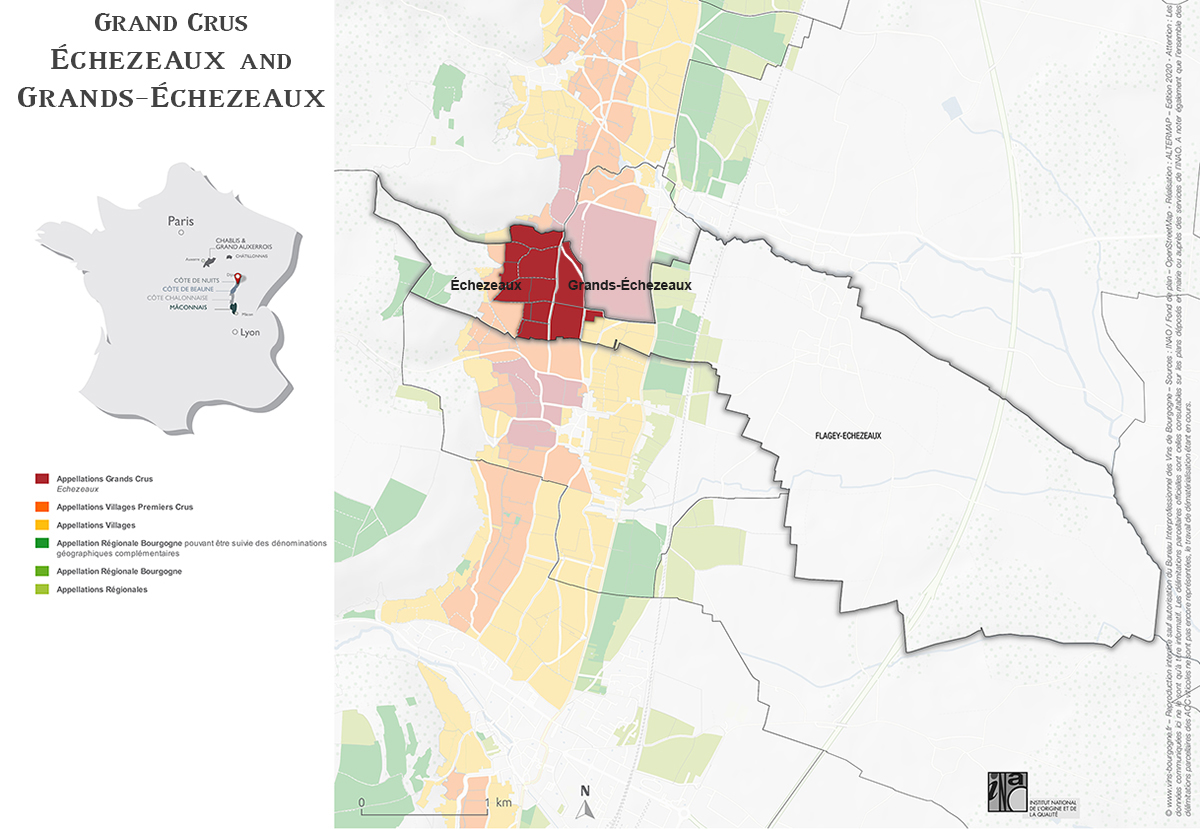
Like the Clos de Vougeot (from which they are separated only by a wall), the most famous vineyards of Flagey were founded by the monks of the abbey of Cîteaux in 12th and 13th centuries. Terroir is fairly homogeneous, with clay overlying Bajocien limestone, but there are a number of climats with more diverse soils consisting of marls with pebbly at mid-slope, and higher up, deeper soil with red alluvium, yellowish marl to create a highly prized mosaic.
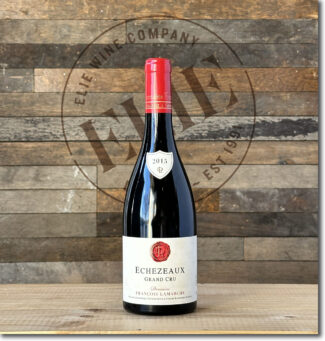 Domaine François Lamarche, Échezeaux Grand Cru ($390)
Domaine François Lamarche, Échezeaux Grand Cru ($390)
From parcels in Les Champs Traversins, Les Cruots and Clos Saint-Denis, making up about three acres with vines, on average, 30-years-old. Nicole Lamarche works with very low yields, which alongside the Domaine’s delicate extraction results in a supremely elegant expression of this terroir.
Vosne-Romanée
Originally named just Vosne, the village took the suffix Romanée in 1866 in honor of its most prized vineyard, La Romanée—a habit of many Burgundy communes of the era. From the perspective of a wine lover, it may be grouped together with neighboring Flagey-Echézeaux; while the villages are entirely separate, their finest vineyards are clustered together immediately north of Vosne-Romanée and take that latter title.
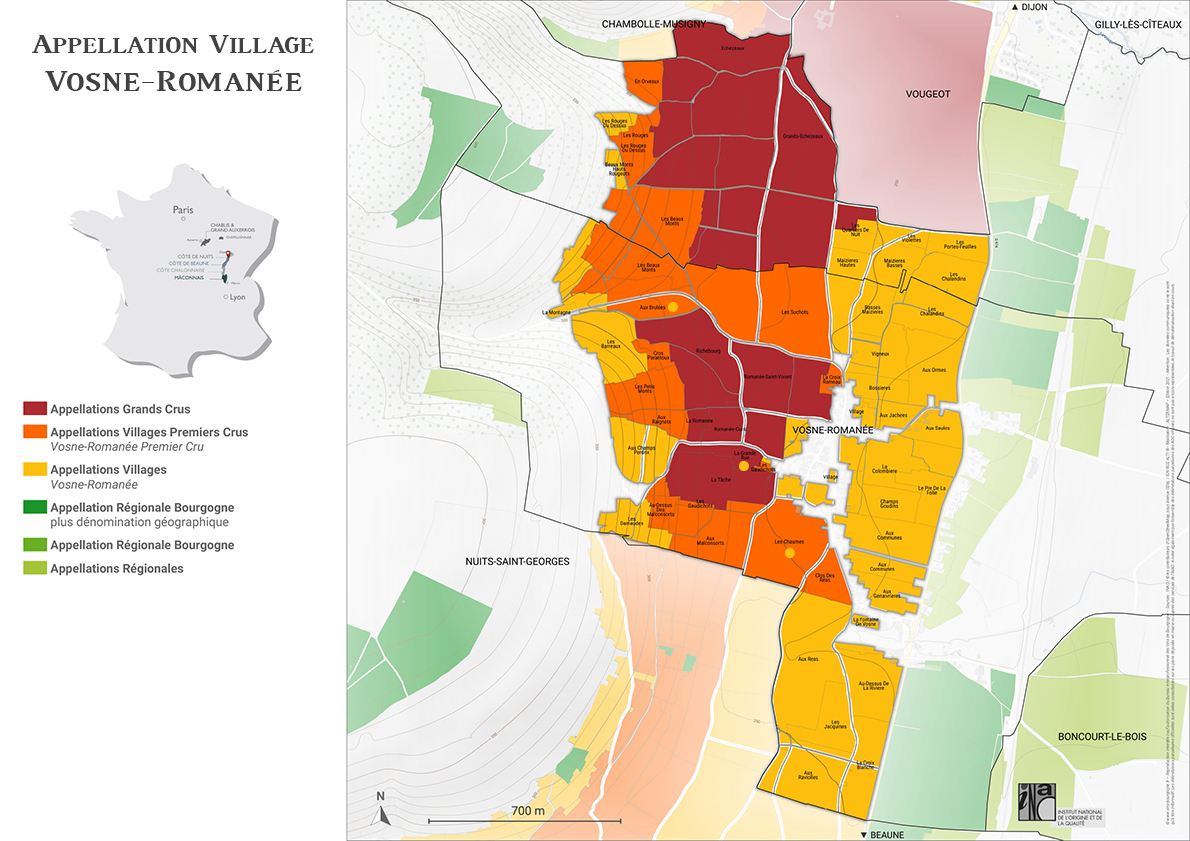
The entire surface area of Vosne-Romanée Grand Crus vineyards (excluding Flagey-Echézeaux) is 67 acres, about half the size of the single Clos de Vougeot climat just across the commune boundary. Even so, the commune of Flagey-Echézeaux with the Echézeaux and Grands-Echézeaux sites included, has more Grand Cru surface area than the Premier Crus and Villages combined. Vosne-Romanée is divided between six individual climats—La Grande Rue, La Tâche, Richebourg, La Romanée, Romanée-Saint-Vivant and the most famous, Romanée-Conti. The best vineyards lie on the mid-slope of the Côte d’Or escarpment. Around these prestigious sites are dotted the Premier Cru vineyards and some entirely unclassified land—the difference between a Grand Cru vine and one deemed worthy only of the regional Bourgogne appellation is sometimes a matter of a few feet.
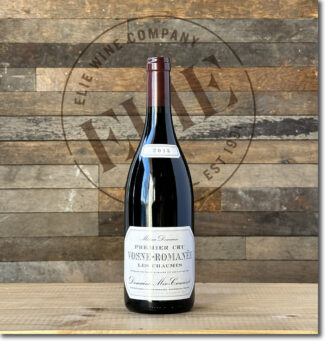 Domaine Méo-Camuzet, Vosne-Romanée Premier Cru Les Chaumes ($490)
Domaine Méo-Camuzet, Vosne-Romanée Premier Cru Les Chaumes ($490)
The 16-acre Les Chaumes vineyard is on the southern end of Vosne-Romanée, somewhat low on the slopes, giving it unique terroir: The limestone-based marl under the vineyard is deeper and richer than in the climats further up the Côte d’Or. It is one of the warmer climats in Vosne and often among the first to be harvested. The domain owns five acres planted in the 1950s and the 1970s.
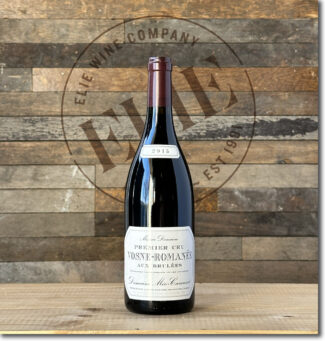 Domaine Méo-Camuzet, Vosne-Romanée Premier Cru Aux Brûlées ($890)
Domaine Méo-Camuzet, Vosne-Romanée Premier Cru Aux Brûlées ($890)
As fans of the classic custard-based dessert know, ‘brûlée’ means ‘burnt.’ And although the grapes here don’t quite ignite, they tend ripen quickly in this 11-acre site at the northeastern end of Vosne-Romanée. There is little topsoil and the vineyard tends to be dry, exaggerating the effect; Méo-Camuzet’s plot was planted in the 1930s. This is a wine intended to age slowly, and as such, it treated to top Bertranges and Tronçais oak.
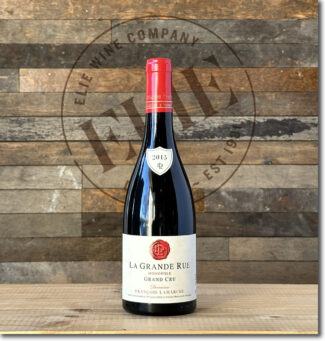 Domaine François Lamarche, La Grande Rue Grand Cru ‘Monopole’ ($990)
Domaine François Lamarche, La Grande Rue Grand Cru ‘Monopole’ ($990)
One of six Grand Cru vineyards Vosne-Romanée, it is by far the youngest, only given Grand Cru status in 1992, 56 years after the rest of Vosne-Romanée’s top vineyards. It is also one of the smallest at just under four acres. The Lamarche family acquired the vineyard as a wedding present in the early 1930s, and have been the sole proprietors ever since. During the mid-20th Century, they exchanged some small parcels of vines with Domaine de la Romanée-Conti, expanding La Grande Rue to its current size.
Nuits-Saint-Georges
With the village of Nuits-St-Georges itself as the fulcrum, the robust appellation extends to the north as far as the border of Vosne-Romanée, while the southern section lies partly in Nuits-Saint-Georges and partly in Prémeaux. The wines from each section are unique in style and according to experts, with differences defined (in the main) by the lay of the land. The soils in the northern sector are built around the pebbly alluvium that washes down from up-slope, or in the low-lying parts, around silty deposits from the river Meuzin. In the southern sector the alluvia at the base of the slopes originate in the combe of Vallerots where there are deep marly-limestone soils, while at the top of the slope, the soil has nearly all eroded away and the rock is near the surface. In both regions, favored exposures are mostly to the east or southeast.
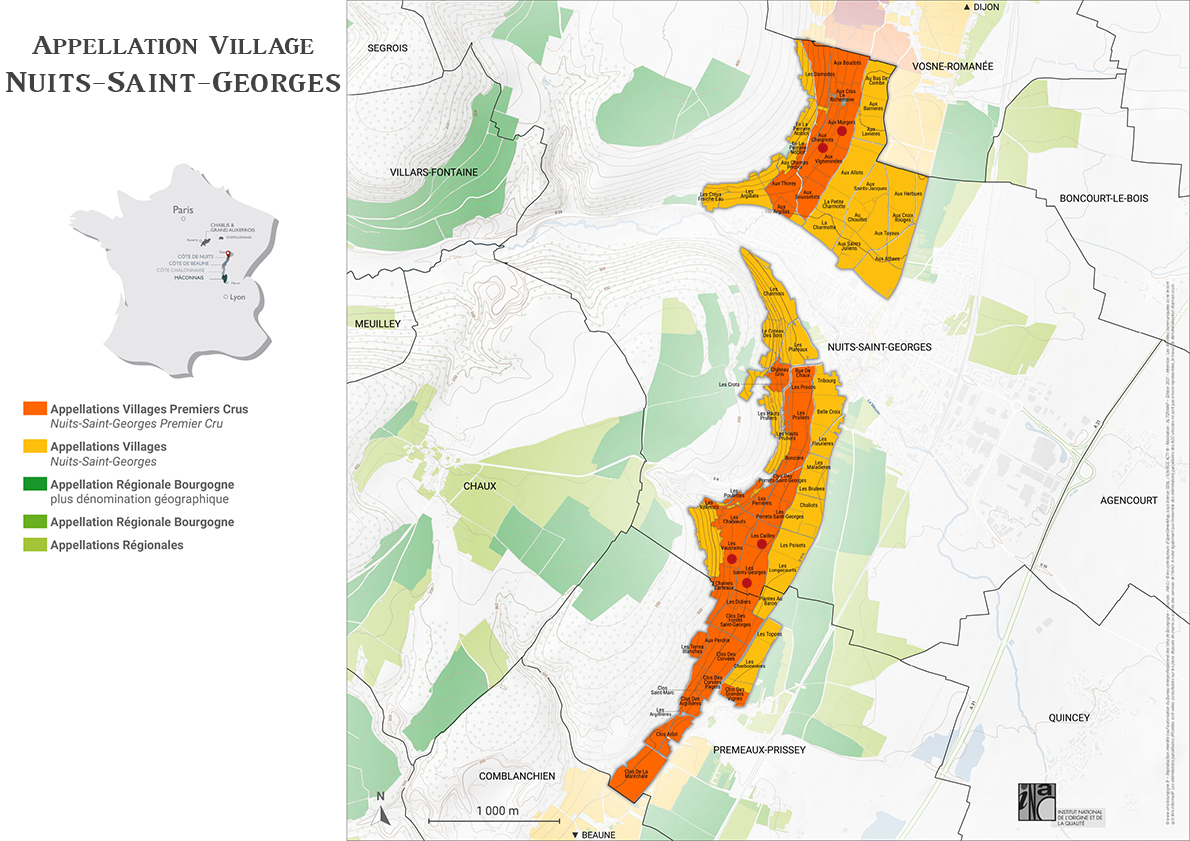
Producing predominantly red wine, Nuit-Saint-George bottles display the muscularity and breeding most sought after in Burgundy—the ability to improve with bottle age. When young, the wine display aromas of cherry, strawberry and blackcurrant, and when matured, leather, truffle, fur and game.
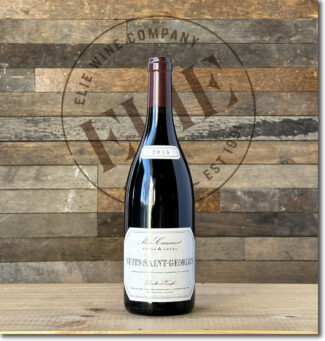 Méo-Camuzet Frère & Sœurs, Nuits-Saint-Georges ($190)
Méo-Camuzet Frère & Sœurs, Nuits-Saint-Georges ($190)
A blend of domaine and négoce fruit, and although the latter is purchased on the vine, it is not handle in the typical manner of the négociant. Several interventions are carried out during the growing season and most of these plots are monitored for several years, which makes it possible to get to know them as well as the grower does. Jean-Nicolas describes it ‘like renting land.’
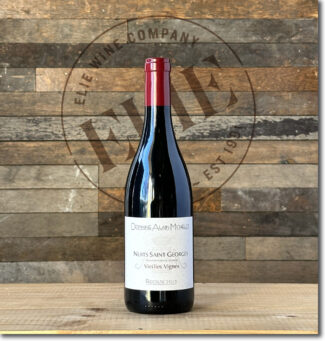 Domaine Alain Michelot ‘Vieilles Vignes’, Nuits-Saint-Georges ($89)
Domaine Alain Michelot ‘Vieilles Vignes’, Nuits-Saint-Georges ($89)
Two vineyard sites are used for sourcing grapes, one in the southern part of the village itself, where vines range from 65 and 77 years old, and another in Primeaux-Prisey, with vines about 50 years old.
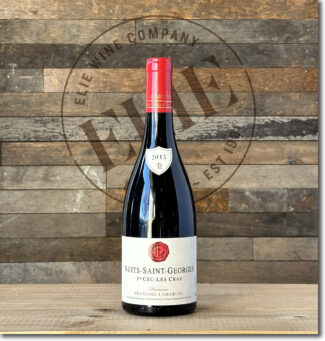 Domaine François Lamarche, Nuits-Saint-Georges Premier Cru Les Cras ($160)
Domaine François Lamarche, Nuits-Saint-Georges Premier Cru Les Cras ($160)
Les Cras and La Richemone are adjacent Premier Crus, but Les Cras is lower on the slope, and the soils are shallower, stonier and contain more clay, giving the wines not only more meat, but more bone with a distinct chalkiness. Lamarche’s plot is smaller than an acre.
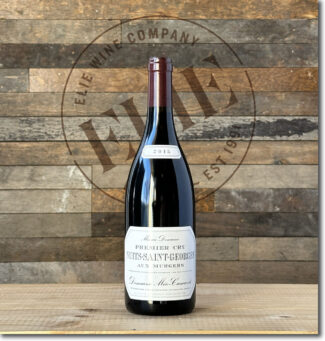 Domaine Méo-Camuzet, Nuits-Saint-Georges Premier Cru Aux Murgers ($390)
Domaine Méo-Camuzet, Nuits-Saint-Georges Premier Cru Aux Murgers ($390)
Aux Murgers is a mid-slope vineyard at the northern end of the Nuits-Saint-Georges commune, and boasts a southerly exposure. This wine is from a single-vineyard parcel on one of the family’s most primely positioned slopes, using vines planted between 1965 and 1972 on soils fairly evenly divided between clay, Comblanchien limestone, sand and gravel.
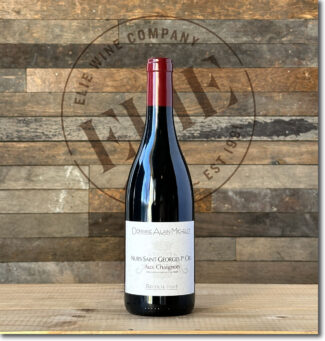 Domaine Alain Michelot, Nuits Saint Georges Premier Cru Aux Chaignots ($150)
Domaine Alain Michelot, Nuits Saint Georges Premier Cru Aux Chaignots ($150)
Chaignots is a 13-acre vineyard located in northern part of Nuits-Saint-Georges. Situated mid-slope on limestone soils, the wines tend toward earthy elegance. Because there are no Grand Cru vineyards in Nuits-Saints-Georges, the appellation’s considerable reputation rests on its excellent Premier Crus like this one.
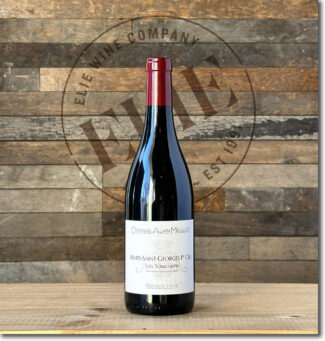 Domaine Alain Michelot, Nuits Saint Georges Premier Cru Les Vaucrains ($160)
Domaine Alain Michelot, Nuits Saint Georges Premier Cru Les Vaucrains ($160)
Les Vaucrains is one of the most highly regarded vineyards in Nuits-Saint-Georges; the 15-acre site is on the steep, upper slope of the Côte d’Or, just below the line on the famous escarpment where vineyard becomes forest, with the Premier Cru vineyards of Les Chaboeufs and Chaines Carteaux lying north and south respectively. It is the vineyard’s position at the top of the hill that accounts for the weight of these wines; the calcareous soil is quite rocky as the process of erosion has sent much of the smaller material down the hill. The lack of water in this free-draining soil makes for concentrated grapes.
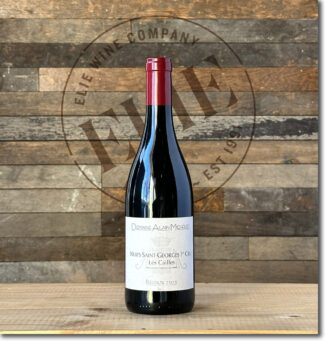 Domaine Alain Michelot, Nuits Saint Georges Premier Cru Les Cailles ($150)
Domaine Alain Michelot, Nuits Saint Georges Premier Cru Les Cailles ($150)
Les Cailles lies between Les Saint-Georges and Les Porrets-Saint-Georges in the southern part of the commune; it is a 17-acre mid-slope climat often considered worthy of Grand Cru status. The vineyard’s position is perfectly angled to take advantage of the morning sunlight; as it slopes gently toward the east, the vines are bathed in sunlight for a good portion of the day. The soil is pebbly and sandy, and derives its name from this; ‘cailloux’ is the French term for a pebble.
 Domaine Thibault Liger-Belair, Nuits-Saint-Georges Premier Cru Les Saint-Georges ($290)
Domaine Thibault Liger-Belair, Nuits-Saint-Georges Premier Cru Les Saint-Georges ($290)
Of Nuits-Saint-Georges’ 41 Premier Cru vineyards, Les Saint-Georges is arguably among the top three. Located halfway between Premeaux-Prissey and Nuits-Saint-Georges, this site has been famous for many centuries as a source of excellent wines and is considered by most to be of Grand Cru quality. The soils are deep, made up of several different kinds of limestone, giving a complex and varied terroir containing influences from Comblanchien, Premeaux and oolite limestones, with enough clay throughout to provide hydration as well as good drainage. The slope is fairly gentle and angled toward the south-east, both of which make for an excellent environment for raising top-flight Pinot Noir.
- - -
Posted on 2024.04.02 in Morey-Saint-Denis, Premeaux-Prissey, Nuits-Saint-Georges, Marsannay, Vosne-Romanée, Gevrey-Chambertin, Chambolle-Musigny, Hautes-Côtes de Nuits, Vougeot, France, Burgundy, Wine-Aid Packages
Featured Wines
- Notebook: A’Boudt Town
- Saturday Sips Wines
- Saturday Sips Review Club
- The Champagne Society
- Wine-Aid Packages
Wine Regions
Grape Varieties
Albarino, Albarín Blanco, Albarín Tinto, Albillo, Aleatico, Aligote, Arbanne, Aubun, Barbarossa, barbera, Biancu Gentile, bourboulenc, Cabernet Franc, Caino, Caladoc, Calvi, Carcajolu-Neru, Carignan, Chablis, Chardonnay, Chasselas, Cinsault, Clairette, Corvina, Counoise, Dolcetto, Erbamat, Ferrol, Frappato, Friulano, Fromenteau, Gamay, Garnacha, Garnacha Tintorera, Gewurztraminer, Graciano, Grenache, Grenache Blanc, Groppello, Juan Garcia, Lambrusco, Loureira, Macabeo, Macabou, Malbec, Malvasia, Malvasia Nera, Marcelan, Marsanne, Marselan, Marzemino, Mondeuse, Montanaccia, Montònega, Morescola, Morescono, Moscatell, Muscat, Natural, Niellucciu, Parellada, Patrimonio, Pedro Ximénez, Petit Meslier, Petit Verdot, Pineau d'Aunis, Pinot Blanc, Pinot Gris, Pinot Meunier, Pinot Noir, Pouilly Fuisse, Pouilly Loche, Poulsard, Prieto Picudo, Riesling, Rondinella, Rose, Rousanne, Roussanne, Sagrantino, Sauvignon Blanc, Savignin, Sciacarellu, Semillon, Souson, Sparkling, Sumoll, Sylvaner, Syrah, Tannat, Tempranillo, Trebbiano, Trebbiano Valtenesi, Treixadura, Trousseau, Ugni Blanc, vaccarèse, Verdicchio, Vermentino, Xarel-loWines & Events by Date
- July 2024
- June 2024
- May 2024
- April 2024
- March 2024
- February 2024
- January 2024
- December 2023
- November 2023
- October 2023
- September 2023
- August 2023
- July 2023
- June 2023
- May 2023
- April 2023
- March 2023
- February 2023
- January 2023
- December 2022
- November 2022
- October 2022
- September 2022
- August 2022
- July 2022
- June 2022
- May 2022
- April 2022
- March 2022
- February 2022
- January 2022
- December 2021
- November 2021
- October 2021
- September 2021
- August 2021
- July 2021
- June 2021
- May 2021
- April 2021
- March 2021
- February 2021
- January 2021
- December 2020
- November 2020
- October 2020
- September 2020
- August 2020
- July 2020
- June 2020
- May 2020
- April 2020
- March 2020
- February 2020
- January 2020
- December 2019
- November 2019
- October 2019
- September 2019
- August 2019
- July 2019
- June 2019
- May 2019
- April 2019
- March 2019
- February 2019
- January 2019
- December 2018
- November 2018
- October 2018
- September 2018
- August 2018
- July 2018
- June 2018
- May 2018
- April 2018
- March 2018
- February 2018
- January 2018
- December 2017
- November 2017
- October 2017
- September 2017
- August 2017
- July 2017
- June 2017
- May 2017
- April 2017
- March 2017
- February 2017
- January 2017
- December 2016
- November 2016
- October 2016
- September 2016
- August 2016
- July 2016
- June 2016
- May 2016
- April 2016
- March 2016
- February 2016
- January 2016
- December 2015
- November 2015
- October 2015
- September 2015
- August 2015
- July 2015
- June 2015
- May 2015
- April 2015
- March 2015
- February 2015
- January 2015
- December 2014
- November 2014
- October 2014
- September 2014
- August 2014
- July 2014
- June 2014
- April 2014
- March 2014
- February 2014
- January 2014
- December 2013
- November 2013
- October 2013
- September 2013
- August 2013
- July 2013
- June 2013
- May 2013
- April 2013
- March 2013
- February 2013
- January 2013
- December 2012
- November 2012
- October 2012
Search



